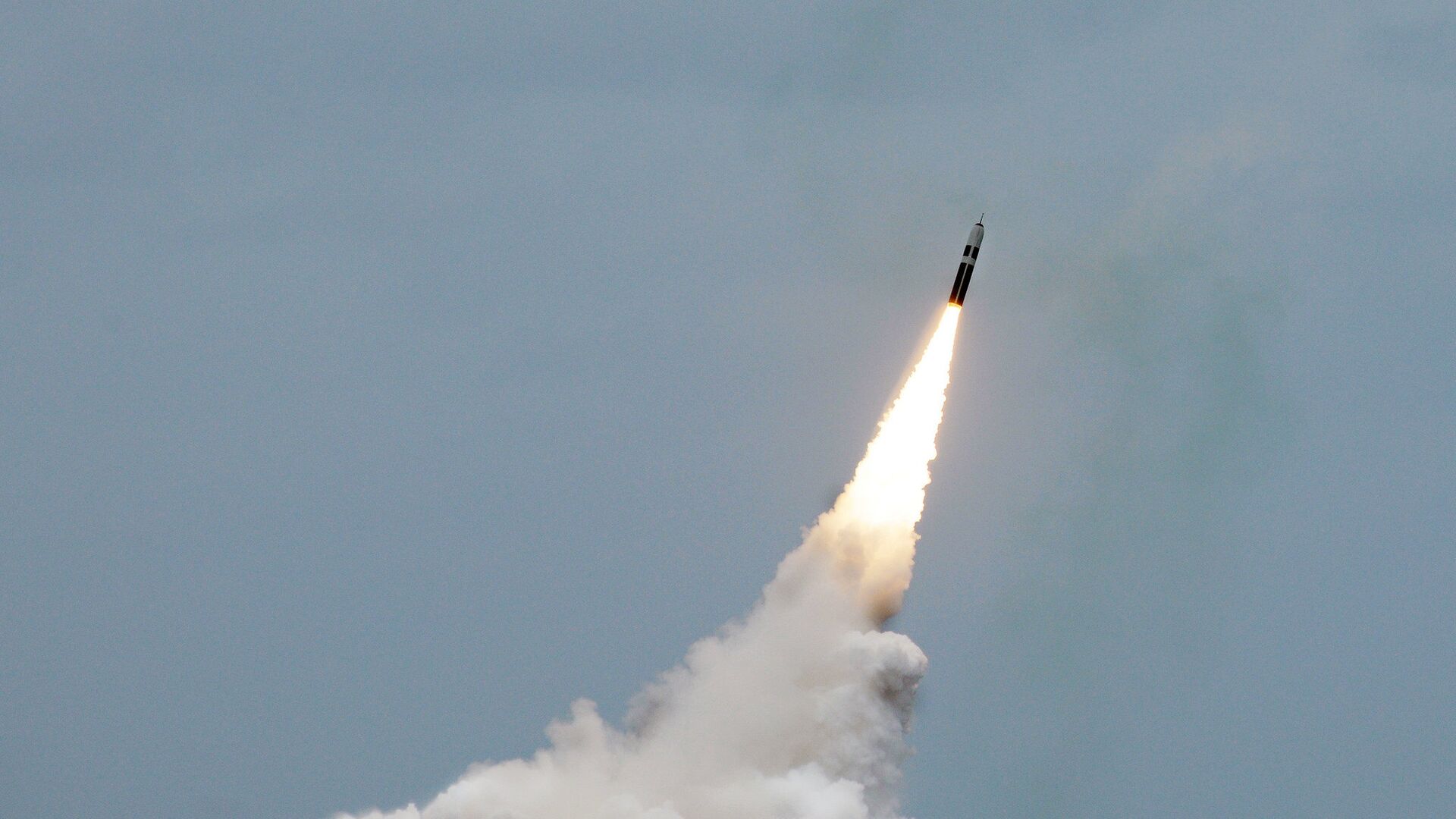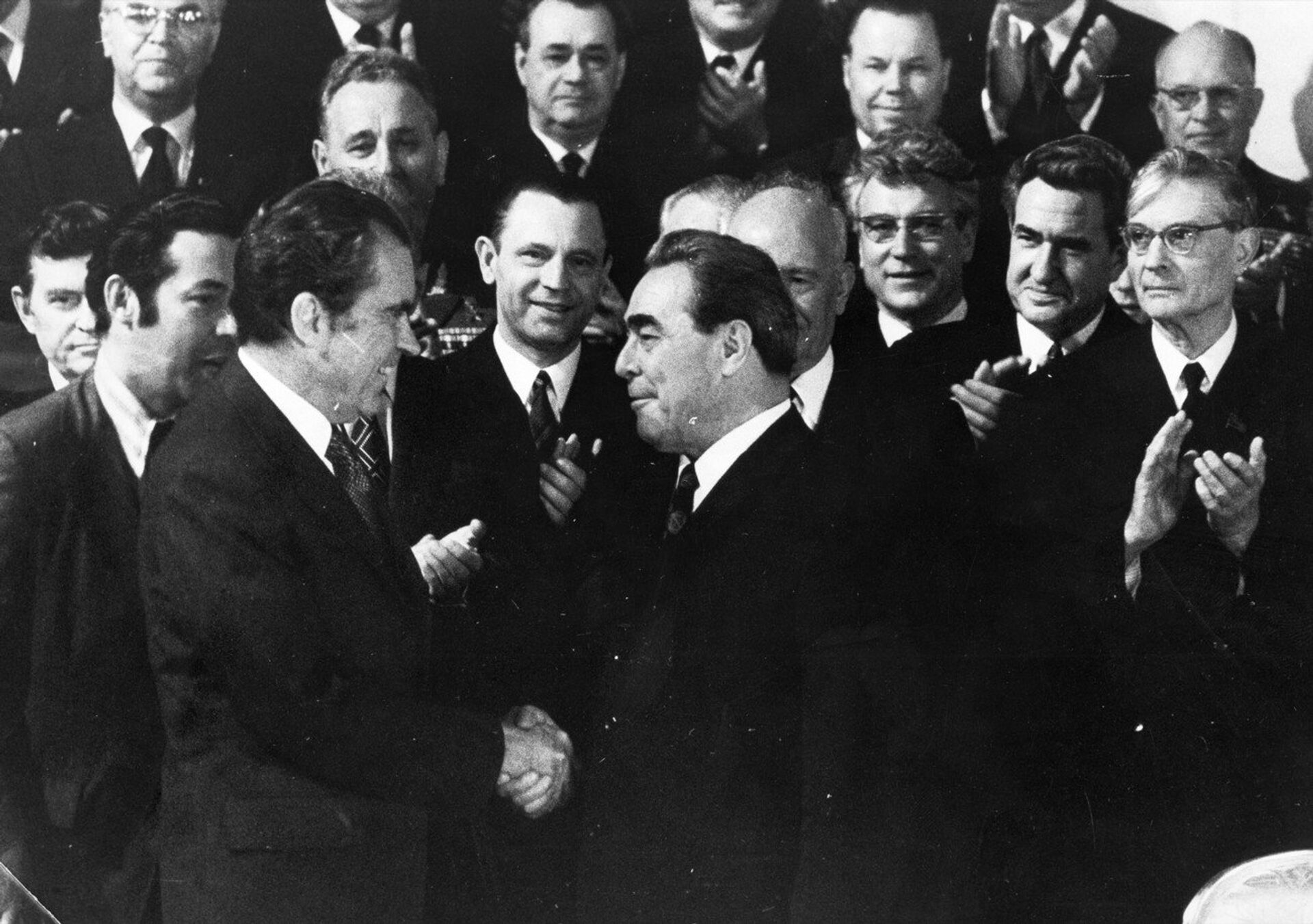https://sputnikglobe.com/20211213/us-withdrawal-from-abm-treaty-continues-to-adversely-affect-global-security-20-years-after-1091485616.html
US Withdrawal From ABM Treaty Continues to Adversely Affect Global Security 20 Years After
US Withdrawal From ABM Treaty Continues to Adversely Affect Global Security 20 Years After
Sputnik International
The 2001 decision by former US President George W. Bush to withdraw from the Anti-Ballistic Missile Treaty continues to have a significant and detrimental effect on international stability 20 years later, experts told Sputnik.
2021-12-13T12:28+0000
2021-12-13T12:28+0000
2021-12-13T13:52+0000
us
russia
missiles
ballistic missiles
https://cdn1.img.sputnikglobe.com/img/104988/94/1049889492_0:0:2048:1153_1920x0_80_0_0_38b95514d1dbabe7ad97da8909878c21.jpg
Twenty years ago on 13 December, Bush announced the decision to exit the ABM Treaty, signed by Moscow and Washington in 1972. The US officially left the agreement six months later, on 13 June 2002. The defunct treaty mandated both sides desist from the deployment, testing and development of sea-, air-, space- and mobile land-based anti-missile systems for intercepting strategic ballistic missiles.Nikolai Sokov, a senior fellow at the Vienna Centre for Disarmament and Nonproliferation, told Sputnik that the bilateral process of reducing offensive arms continued after the collapse of the treaty only because Washington had failed to create a national missile defence system. Although Moscow agreed to sign New START without any restrictions on missile defence in 2010, it is likely to refuse to make such concessions during the current strategic stability talks, the expert said.Marc Finaud, head of arms proliferation at the Geneva Centre for Security Policy, told Sputnik that the US withdrawal from the ABM Treaty marked the beginning of a new arms race between offensive and defensive systems. According to the expert, the two countries have begun actively building up arms, competing against each other.Finaud said that it would be "a major advance" if the US and Russia included defensive systems in their strategic stability talks, as well as other types of weapons, such as hypersonic missiles and nuclear torpedoes.Sokov, however, noted that the likelihood of the countries signing a new agreement similar to the ABM Treaty is very low. According to the expert, there is currently no need to strictly limit anti-missile defence. Sokov additionally noted that information on missile defence capabilities in the next 15-20 years is required to ensure the stability and predictability of international relations.Both experts also stressed that New START remains the only agreement regulating the nuclear weapons of both Russia and the US. Its termination will leave the international community deprived of all legally binding restrictions on the world's two largest nuclear arsenals. The experts stressed the need for the countries to agree on a new treaty to replace New START after it expires in 2026.Yet, according to Sokov, the stumbling block here is whether other elements of the strategic balance will be taken into account.When asked about a recent proposal by Russian Deputy Foreign Minister Sergei Ryabkov to introduce a bilateral moratorium on the deployment of missiles in Europe, Sokov said that it is in the interest of all sides, but NATO would not agree to this due to Russia's alleged violation of the 1987 Intermediate-Range Nuclear Forces Treaty (INF Treaty), another key arms control agreement the US withdrew from in February 2019.In conclusion, Sokov expressed regret about the arms race unfolding in Europe. Within a few years, Washington will begin deploying medium-range ground-based hypersonic missiles in the region, and Moscow will respond in kind, the expert predicted.
Sputnik International
feedback@sputniknews.com
+74956456601
MIA „Rosiya Segodnya“
2021
Sputnik International
feedback@sputniknews.com
+74956456601
MIA „Rosiya Segodnya“
News
en_EN
Sputnik International
feedback@sputniknews.com
+74956456601
MIA „Rosiya Segodnya“
Sputnik International
feedback@sputniknews.com
+74956456601
MIA „Rosiya Segodnya“
abm treaty, us-russia treaty, inf treaty, arms race, nuclear weapons
abm treaty, us-russia treaty, inf treaty, arms race, nuclear weapons
US Withdrawal From ABM Treaty Continues to Adversely Affect Global Security 20 Years After
12:28 GMT 13.12.2021 (Updated: 13:52 GMT 13.12.2021) MOSCOW (Sputnik) - The 2001 decision by former US President George W. Bush to withdraw the country from the Anti-Ballistic Missile (ABM) Treaty continues to have a significant and detrimental effect on international stability and security 20 years later, experts told Sputnik on the anniversary of the landmark choice.
Twenty years ago on 13 December, Bush announced the decision to exit the ABM Treaty, signed by Moscow and Washington in 1972. The US officially left the agreement six months later, on 13 June 2002. The defunct treaty mandated both sides desist from the deployment, testing and development of sea-, air-, space- and mobile land-based anti-missile systems for intercepting strategic ballistic missiles.
Nikolai Sokov, a senior fellow at the Vienna Centre for Disarmament and Nonproliferation, told Sputnik that the bilateral process of
reducing offensive arms continued after the collapse of the treaty only because Washington had failed to create a national missile defence system.
Although Moscow agreed to sign New START without any restrictions on missile defence in 2010, it is likely to refuse to make such concessions during the current strategic stability talks, the expert said.
"Moreover, since 2010 Russia has achieved major progress on missile defence, so the situation is getting more complicated: many in the US think that it would be unwise to leave missile defence unregulated but the clearly outdated pro-missile defence lobby is still there and very strong", Sokov added.
Marc Finaud, head of arms proliferation at the Geneva Centre for Security Policy, told Sputnik that the US withdrawal from the ABM Treaty marked the beginning of a new arms race between offensive and defensive systems. According to the expert, the two countries have begun actively building up arms, competing against each other.
"First, Russia responded by withdrawing from the START II Treaty that had banned multiple warheads on intercontinental ballistic missiles (MIRVs), and developed such systems to counter US defences. Then, after the US further developed its defensive systems and extended them to NATO, Russia responded by investing in hypersonic missiles also designed to bypass US defensive systems", the expert explained.
Finaud said that it would be "a major advance" if the US and Russia included defensive systems in their strategic stability talks, as well as other types of weapons, such as hypersonic missiles and nuclear torpedoes.
Sokov, however, noted that the likelihood of the countries signing a new agreement similar to the ABM Treaty is very low. According to the expert, there is currently no need to strictly limit anti-missile defence. Sokov additionally noted that information on missile defence capabilities in the next 15-20 years is required to ensure the stability and predictability of international relations.
"Lack of predictability drives the modernisation of offensive forces – the US has not been able to create a highly capable missile defence, as it promised, but Russia has conducted modernisation in the last 20 years under the assumption that the US would succeed. That situation will repeat again and again unless there is greater predictability", Sokov stated.
Both experts also stressed that
New START remains the only agreement regulating the nuclear weapons of both Russia and the US. Its termination will leave the international community deprived of all legally binding restrictions on the world's two largest nuclear arsenals. The experts stressed the need for the countries to agree on a new treaty to replace New START after it expires in 2026.
Yet, according to Sokov, the stumbling block here is whether other elements of the strategic balance will be taken into account.
"Russia has insisted on that for 20 years or so. The US has resisted, but given advances in Russian missile defence and long-range conventional weapons, the old approach is against US interests. Unfortunately, few in Washington are prepared to accept that", the expert said.
When asked about a recent proposal by Russian Deputy Foreign Minister Sergei Ryabkov to introduce a bilateral moratorium on the deployment of missiles in Europe, Sokov said that it is in the interest of all sides, but NATO would not agree to this due to Russia's alleged violation of the 1987 Intermediate-Range Nuclear Forces Treaty (INF Treaty), another key arms control agreement the US withdrew from in February 2019.
"Its [NATO's] policy is premised on two beliefs: First, that Russia already has an INF-range missile in violation of the INF Treaty; second, that Russia has already deployed these missiles in Europe. Any Russian statements to the opposite or even proposals for verification have been rejected and I do not see a reason to believe NATO's position will change in the near future", the expert noted.
In conclusion, Sokov expressed regret about the arms race unfolding in Europe. Within a few years, Washington will begin deploying medium-range ground-based
hypersonic missiles in the region, and Moscow will respond in kind, the expert predicted.







